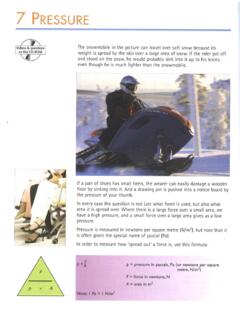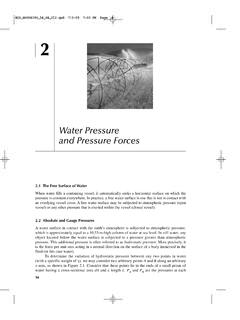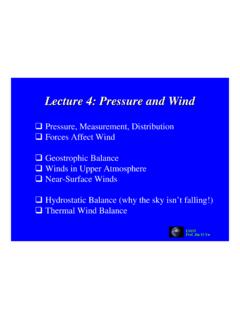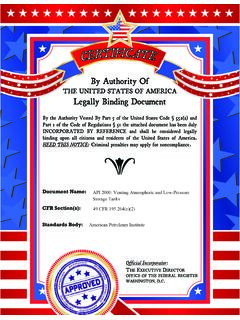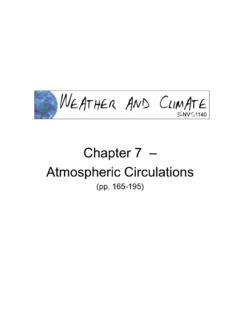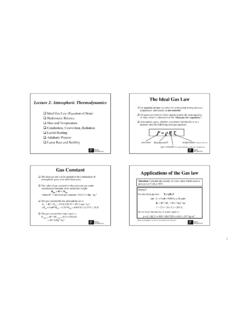Transcription of Pressure vs Temperature (boiling point)
1 Boiling Points and Vapor Pressure Background 1 Boiling Points and Vapor Pressure Background: Definitions Vapor Pressure : The equilibrium Pressure of a vapor above its liquid; the Pressure of the vapor resulting from the evaporation of a liquid above a sample of the liquid in a closed container. Boiling Point: The Temperature at which the vapor Pressure of a liquid is equal to the atmospheric (or applied) Pressure . As the Temperature of the liquid increases, the vapor Pressure will increase, as seen below: Vapor Pressure is interpreted in terms of molecules of liquid converting to the gaseous phase and escaping into the empty space above the liquid. In order for the molecules to escape, the intermolecular forces (Van der Waals, dipole-dipole, and hydrogen bonding) have to be overcome, which requires energy.
2 This energy can come in the form of heat, aka increase in Temperature . Due to this relationship between vapor Pressure and Temperature , the boiling point of a liquid decreases as the atmospheric Pressure decreases since there is more room above the liquid for molecules to escape into at lower Pressure . The graph below illustrates this relationship using common solvents and some terpenes: ( C) Pressure (torr) Pressure vs Temperature (boiling point) EthanolHeptaneIsopropyl AlcoholB-myrceneB-caryophyllened-Limonen eLinaloolPulegone1,8-cineole (eucalyptol)a-pinenea-terpineolterpineol -4-olp-cymeneBoiling Points and Vapor Pressure Background 2 As a very general rule of thumb, the boiling point of many liquids will drop about C for a 10mmHg decrease in Pressure when operating in the region of 760 mmHg ( atmospheric Pressure ).
3 At lower pressures, a 10 C drop in boiling point can be observed for each halving of the Pressure . At lower pressures, a boiling point Nomograph Temperature - Pressure alignment chart can be used to find certain temperatures and pressures. Temperature - Pressure Nomograph: A Nomograph can be used to determine the boiling point at atmospheric Pressure (760 mmHg) given the boiling point at a lower Pressure or to determine the boiling point at lower Pressure given the boiling point at atmospheric Pressure . A typical Nomograph can be seen below: Different websites, such as Sigma-Aldrich, provide adjustable Nomographs that can be used as a tool to find the different boiling points at different pressures. These are a useful tool to find approximate temperatures or pressures when running an extraction.
4 It is still important to consult the manufacturer before running an extraction to make sure the correct parameters are being used for efficient operating conditions.
